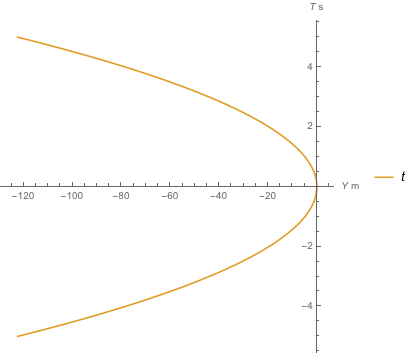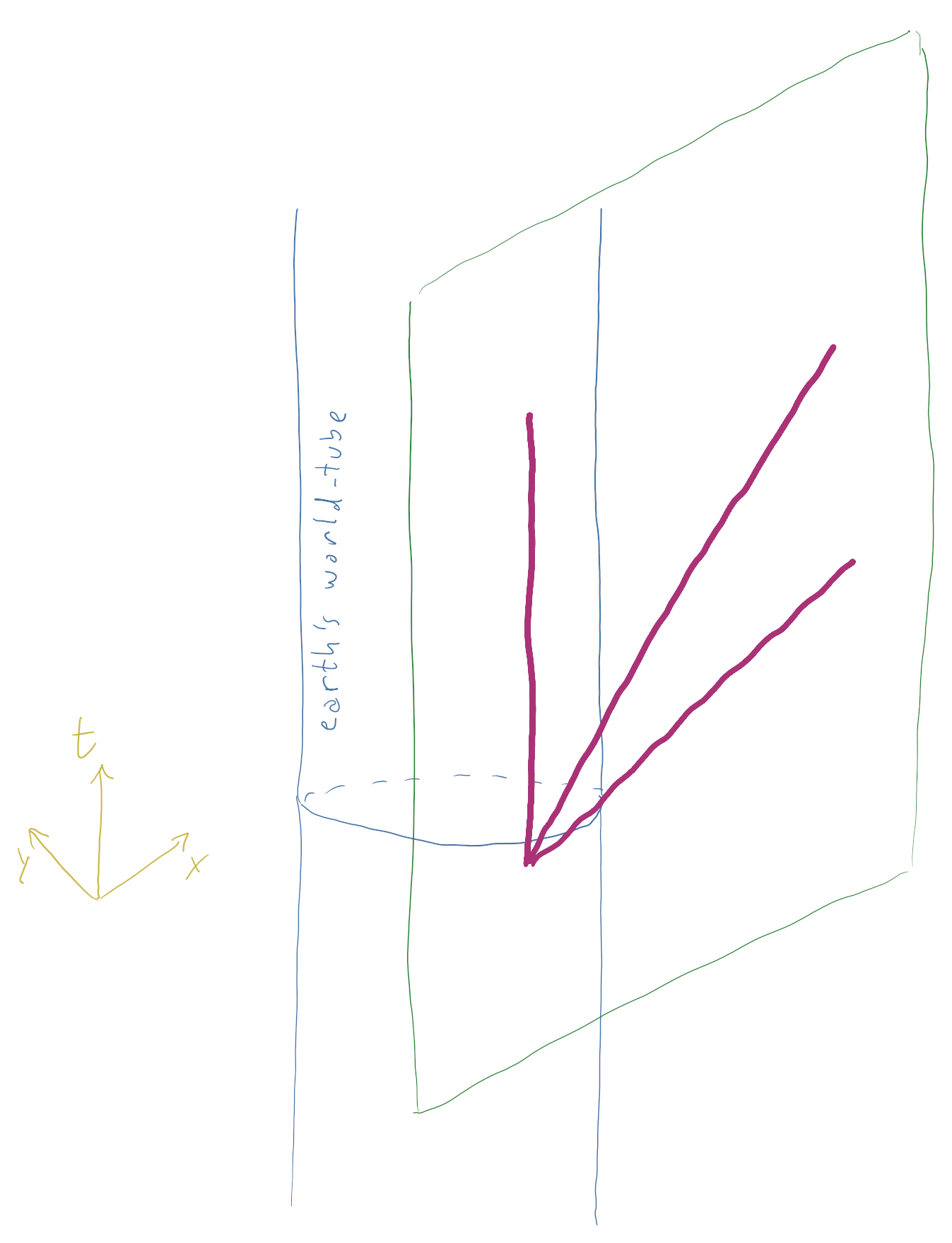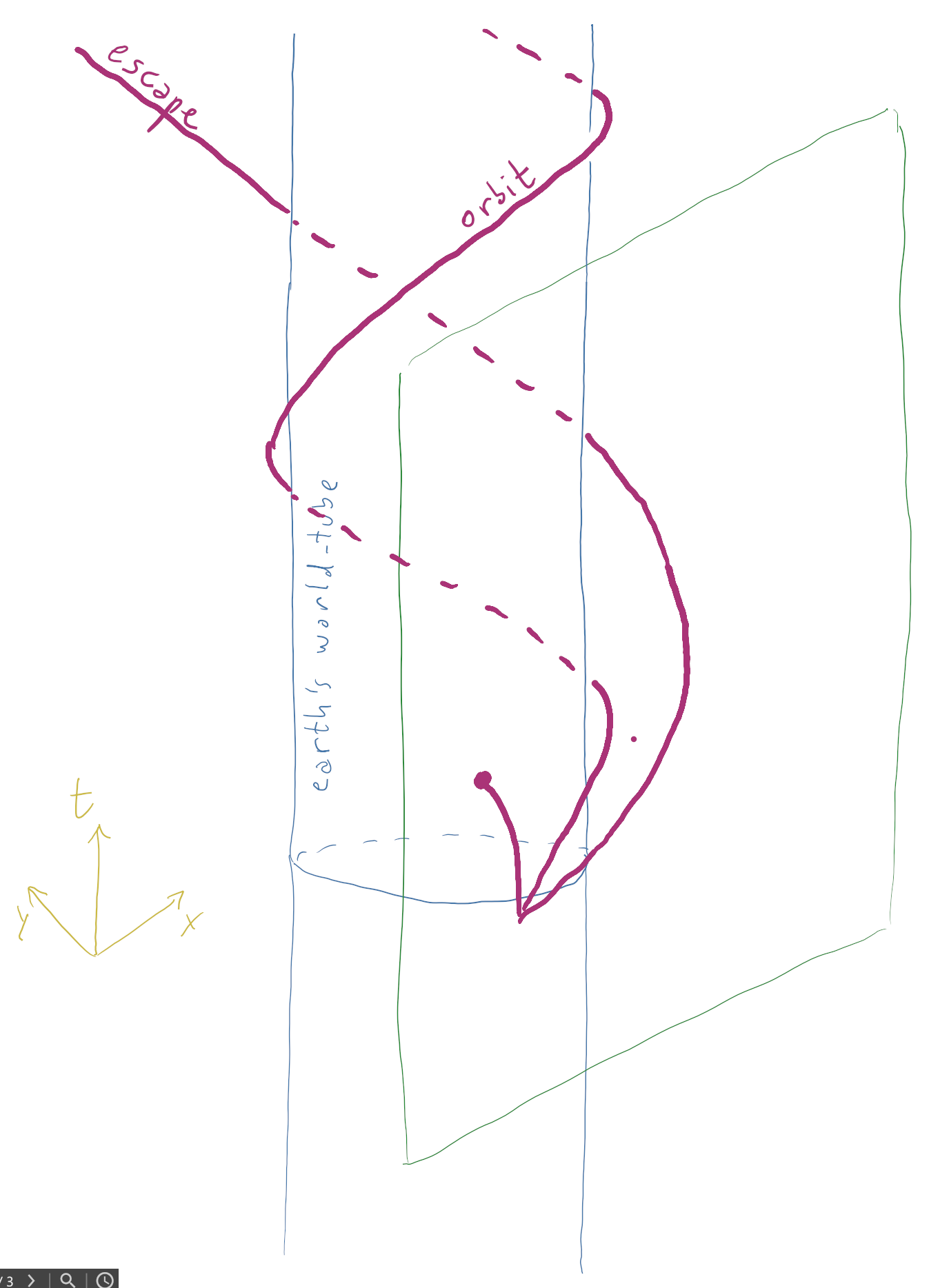This is not a complete answer to your question, it's more of a supplement to the existing answers, and a response to some of the comments you've made.
In a comment, you said:
I visualize warped space time as sort of like a track or grid and obviously if you curve the track or grid anything traveling 'forward' along the track/grid bend around to the degree that the track/grid is bent.
That's perfectly fine, as long as you bear in mind that while travelling through space you cannot avoid moving forwards in time at 1 second per second according to a clock you carry with you. The time measured by that clock is called your proper time, and we generally use the Greek letter $\tau$ (tau) to represent proper time.
In flat spacetime, if you're moving with a constant velocity relative to me (so we measure each other to have constant speed & to be moving in a constant spatial direction), you can consider yourself to be at rest, so your space coordinates are constant, but of course your proper time keeps on ticking ahead, as usual. As I said earlier in a comment, we will divide spacetime up into space & time slightly differently, and there will be an angle between our time axes.
A point in spacetime is called an event. Let's say that you travel from some event A to some other event B. You're at rest in your frame, so in your frame A & B have the same space coordinates, but B will have a later proper time.
In my frame, the spacetime "track" from event A to event B has a nonzero spatial component, as well as its temporal component. So while you say that the time "distance" between A & B is $\tau$ and the space distance is 0, I measure that the space distance between A & B is $s$ and the time distance is $t$ (according to my proper time), and there's a simple formula connecting those numbers, the Minkowski version of the Pythagorean formula:
$$\tau^2 = t^2 - s^2$$
where we use compatible units for our space & time measurements, eg, light-seconds and seconds.
Now in General Relativity we can cut a chunk of curved spacetime into small chunks of spacetime, where the curvature of each small chunk is negligible. If the big chunk is highly curved, then we just need to make those small chunks very small. (This is exactly the same process that we use to make an atlas of flat maps of the curved surface of the Earth. On each page of the atlas we can ignore the curvature and use simple 2D flat geometry, and the errors from ignoring the curvature are negligible). So in each of those small chunks of spacetime we can ignore the spacetime curvature and do our calculations using the equations of flat spacetime from Special Relativity. The mathematics of General Relativity is essentially the machinery required to slice spacetime up into small chunks using standard calculus techniques, and to keep track of how all the chunks connect with each other.
As I mentioned in a previous comment, it's not easy to visualise 4D spacetime, with its Minkowski distance formula replacing the standard Pythagorean distance formula. We can simplify things a little by dropping one spatial dimension. For instance, if we use a frame where the Sun is at rest, the Earth's orbit around the Sun is pretty much in a plane. So we can use that plane for our two spatial dimensions, and we can use the vertical direction to represent time (but bearing in mind that the time direction is a bit weird because of the $\tau^2 = t^2 - s^2$ distance formula). To make things even simpler, let's pretend that the Earth's orbit is a perfect circle, so it orbits the Sun at a constant distance of approximately 499 light-seconds with a constant speed of $10^{-4}\,c$, that is $10^{-4}$ light-seconds per second, or 30 km/s in more conventional units.
Such a circle has a rather small spatial curvature relative to typical human scales. A 55 km long arc of that circle deviates from a perfectly straight line by just over 1 cm. (That is, if you draw a chord from one end of the 55 km arc to the other, the distance between the arc & the chord at their midpoints is around 1 cm). However, that spatial curvature is huge compared to the spacetime curvature.
A path in spacetime is called a worldline. In our frame where the Sun is at rest, the Sun's worldline is a vertical line. The worldline of the Earth is then a helix, with one turn of the helix per year. Now one year is about 31,557,000 seconds, so the pitch of the helix (the vertical distance between turns) is about 63,240 times its radius.
In units of reciprocal light-seconds, the curvature of the orbit circle is $1 / 499 \approx 0.002$. In contrast, the curvature of the orbit helix is
$$\frac{499}{(3155700/2\pi)^2 + 499^2}\\
\approx 1.978\times 10^{-11}$$
which is a lot smaller. So it doesn't take much spacetime curvature to keep a planet in orbit.
Actually, I probably should use a minus sign in the denominator of that helix curvature calculation, to respect the Minkowski metric. However, that doesn't affect the numerical result at this level of precision, it's still $\approx 1.978\times 10^{-11}$.






